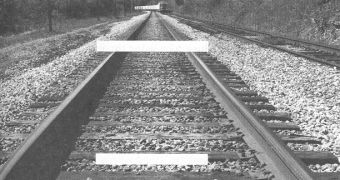You can be fooled. But your hand surely cannot be. A new study published in the journal "Psychological Science" shows that our brain works with the images in two different pathways.
The team led by psychologist Tzvi Ganel, at Ben-Gurion University of the Negev, tested the subjects with the "Ponzo" illusion, that makes two objects which have the same length seem significantly different. The volunteers' index finger and thumb were attached to computerized position-tracking gear and they were put to grasp the objects with their fingers.
Even if the illusion made the object look larger or smaller than in the reality, the grasp size was much more connected to the real rather than the apparent size of the object. To check this further, the team presented "Ponzo" illusions to the subjects, in which the object that appeared to be the smaller of the two was in fact the larger of the two.
"These findings provide compelling support for what psychologists and neuroscientists describe as the 'two visual systems hypothesis'," said Ganel.
This theory was emitted over a decade ago by Mel Goodale and David Milner, and states that one system, vision-for-perception, is responsible for our conscious visual sensory intake of the environment, making us see objects in the complex environment in which they are located. This system is also prone to optical illusions.
The second system, vision-for-action, delivers the visual control required for movement and interaction with objects. This is not conscious, but much swifter, goal-directed and accurate, thus being less exposed to optical illusions.
"The idea of two visual systems in a single brain might seem initially counter-intuitive. After all, it seems obvious that it is the same subjective image that allows us both to recognize the coffee cup on our desk and to pick it up," said Ganel.
It appears that when a discordance emerges between what we consciously perceive and what's really in the environment, the brain 'bets' on the second system.

 14 DAY TRIAL //
14 DAY TRIAL //